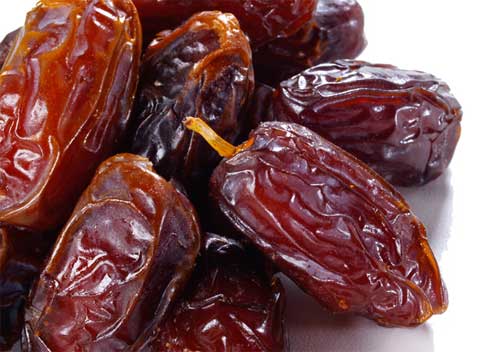Top 10 Health Benefits of Dates

Dates can provide lot of health benefits. Dates are high in iron content and fluorine. Dates are rich source of vitamins and minerals. Consuming dates regularly can help to lower cholesterol and keep many health disorders away. Read on to know more about the top 10 benefits of consuming dates.
Health Benefits of Consuming Dates
The health benefits of dates are innumerable. It is, in fact, a dry fruit that is sweet in taste and is rich in minerals and vitamins. The cultivation of dates can be traced back many years in history. Have a quick look at top 10 health benefits of dates.
Health Benefits of Consuming Dates
- Dates are free from cholesterol and contain very low fat. Dates are rich in vitamins and minerals.
- They are rich source of protein, dietary fiber and rich in vitamin B1, B2, B3 and B5 along with vitamin A1 and C.
- It helps improve the digestive system as it contains soluble and insoluble fibers and different kinds of amino acids.
- Dates are great energy boosters as they contain natural sugars like glucose, sucrose and fructose. To get more advantage add dates to milk and make it a very nutritious snack. Dates are very low in calories and are extremely suitable for health conscious people.
- Dates are rich in potassium and reduced in sodium. This helps regulate a healthy nervous system. Researches have revealed the fact that potassium intake up to a certain extent can reduce risk of stroke. Dates also help in lowering of the LDL cholesterol.
- Dates have high iron content and are very useful in treating anemia. The patients can eat many dates for better advantages. Dates also have fluorine that slows down the process of tooth decay.
- It helps people suffering from constipation. Soak dates overnight and take it along with water to have added advantage.
- It helps increase one’s sexual stamina. Soak one handful of dates in goat’s milk overnight. In the morning grind the dates in the milk and add honey and cardamom powder and drink it.
- Dates help in weight gain and are beneficial for those who suffer from over slimming problem. Dates are excellent for alcoholic intoxication.
- Cures abdominal cancer. The best thing is that it does not have any side effect on the body and is completely natural as well as it works better than medicine. It also helps in improving eye sight and helps in curing night blindness as well.
Dates can be chipped and sprinkled on sweet dishes, cakes and puddings and this enhances the state of the dish too. Selection of dates is very easy and you can have good ones if they appear fleshy and evenly coloured. Make sure there is no artificial sugar coating. Wash the dates properly before you eat because dust accumulates on the dates easily. In addition to all these, storing dates is not a big deal. They are dry fruits and so you do not have to face hassles to store them.
Dates can be introduced in daily diet in any form. You can introduce it in the form of snacks. Adding dates in any form makes the food tasty and healthy too. It fills anyone with energy no matter how tired he is. Keeping in mind the health benefits of dates, one should take utmost care while choosing the right quality of dates.
Do not forget to wash the dates thoroughly so that the dust is cleaned properly before consumption. Buy and consume only those dates that are properly packed and processed. No matter how beneficial eatables are, you need to take care while choosing them and so go for the good ones even if you have to pay a little bit more for that.








